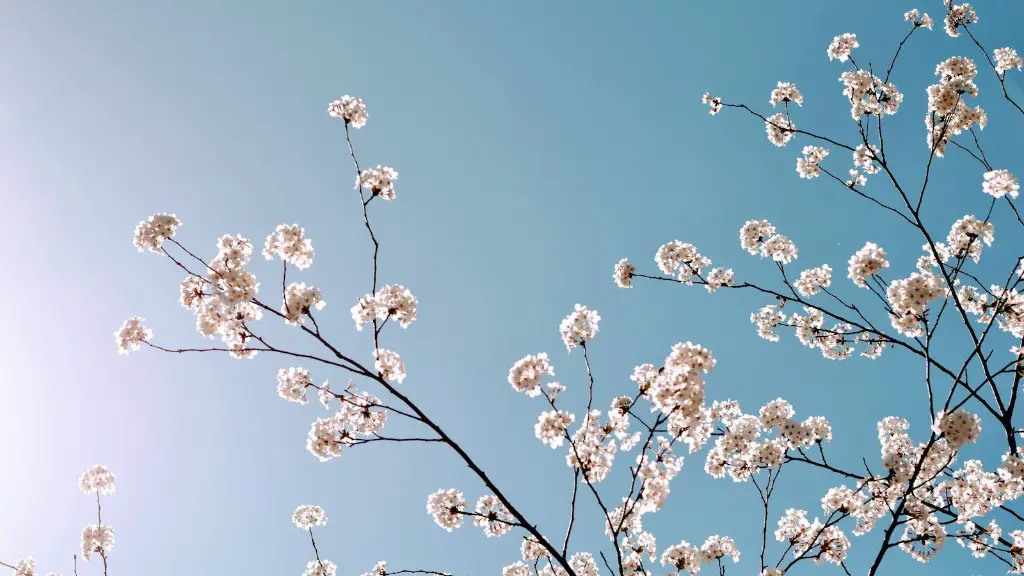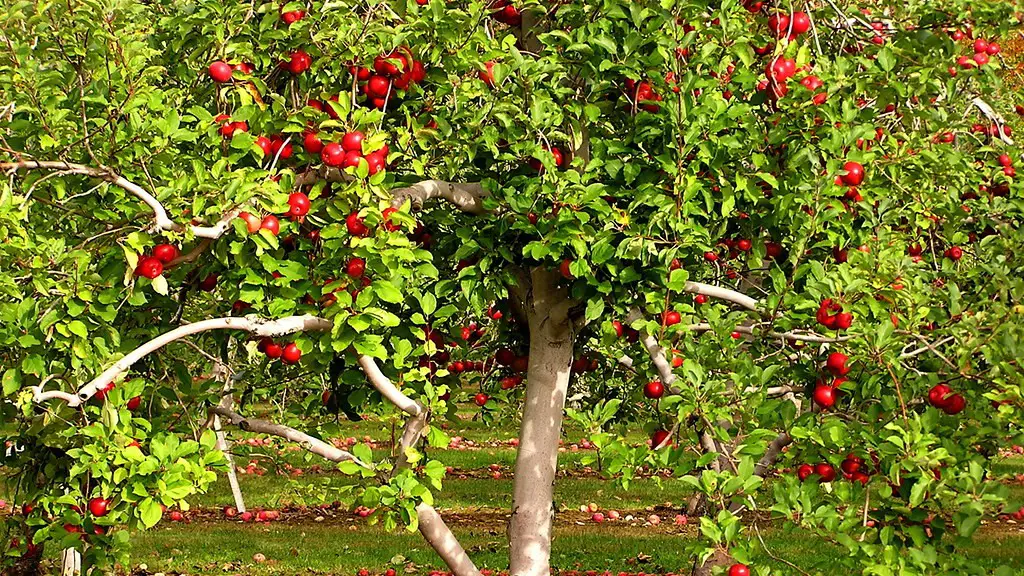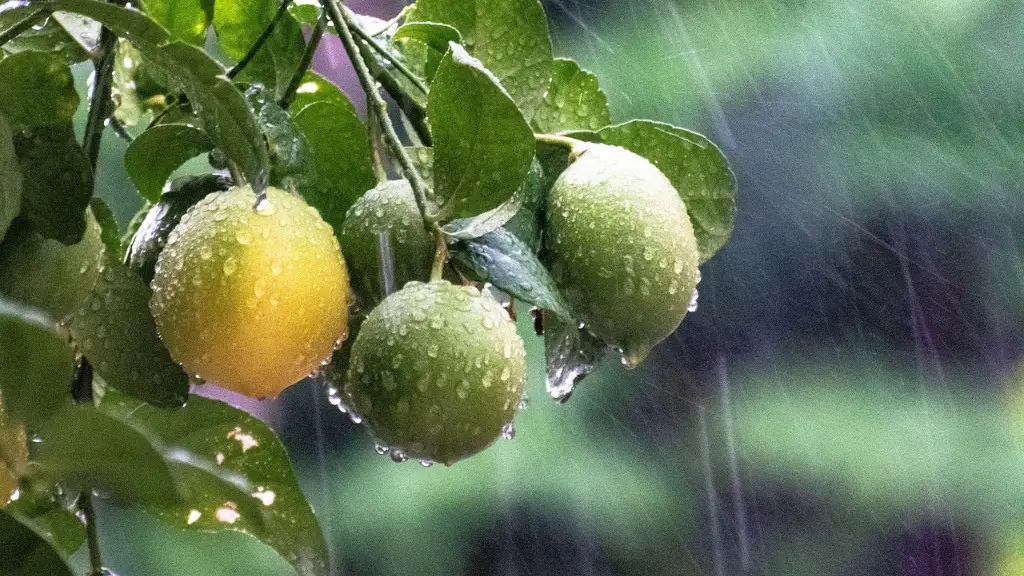Types of Weeping Cherry Trees
Weeping cherry trees are a type of small, ornamental tree that is prized for its graceful, drooping branches and beautiful blossoms. They come in a variety of sizes and species, including the popular Kwanzan and Yoshino cherry trees. Some weeping cherries thrive in warmer climates, while others can tolerate cooler temperatures; depending on where you live, you may need to choose a different type of weeping cherry to match your climate. There are also several dwarf varieties available for smaller spaces.
Planting a Weeping Cherry Tree
The best time to plant a weeping cherry tree is in the fall or early spring. Before you plant, you need to choose a spot in your yard that’s in full to partial sun and offers good drainage; a hill or mound is ideal. Dig a hole that’s about twice as deep and wide as the tree’s roots, and fill it about halfway with organic mulch or compost. Gently loosen the tree’s root system and place it in the hole, making sure it’s at the same level it was at in the container. Fill in the rest of the hole with soil and gently compact it around the base of the tree. Water generously and apply a layer of mulch around the top of the soil.
Caring for a Weeping Cherry Tree
Once you’ve planted your weeping cherry tree, you’ll need to take steps to ensure it stays healthy and grows properly. Make sure it gets plenty of water, especially during dry periods; soaker hoses are a great way to provide water to trees that are farther away from the house. Prune the tree lightly every year to control its size and shape, and fertilize it with a slow-release fertilizer once per year in the spring. Weeping cherry trees can be susceptible to pests and diseases, so watch the tree for signs of issues and address them with an appropriate insecticide or fungicide if necessary.
Enjoying the Weeping Cherry Tree
One of the best parts about having a weeping cherry tree is being able to enjoy its exquisite beauty. The flowers of the weeping cherry tree appear in late winter or early spring and typically last between two and four weeks. During this time, numerous blossoms decorate the tree in shades of white and pink. The flowers are followed by small, decorative fruit which are attractive to birds and other wildlife. As the leaves emerge in the spring and summer, they turn a rich green hue, and in the fall they provide a stunning display of yellow, orange, or burgundy.
Propagating a Weeping Cherry Tree
If you’d like to spread the beauty of your weeping cherry tree, you can do so by propagating it. This can be done by taking a cutting from the tree in early summer and growing it in a pot. Fill a pot with well-draining soil, water it, and place the cutting in the pot. Place the pot in a bright, sheltered location and water it every few days. Once the cutting has taken root, you can transplant it outside in the fall.
Considering Other Ornamental Trees for Beauty
Weeping cherry trees are not the only ornamental trees that can bring beauty to your yard. Many other varieties of small, ornamental trees such as crabapple, fringe tree, and snowbell trees are available in a variety of shapes and sizes. When selecting a tree, make sure you choose a variety that’s suitable for your climate and location, and be sure to research its care requirements to ensure it’s a good fit for you.
Learning More About Weeping Cherry Trees
If you’d like to learn more about weeping cherry trees, there are plenty of resources available. Check out gardening books or web resources to find information about types, planting, care, and more. You can also attend gardening classes or seminars to learn more in depth, or even contact an arborist or tree care specialist to get personalized advice.
The Lifespan of a Weeping Cherry Tree
Weeping cherry trees can live up to 20 or 30 years, or even longer with proper maintenance and care. Trees that are susceptible to disease should be regularly inspected and treated if necessary, and pruning should be done every few years to maintain the shape of the tree and reduce any potential hazards. Applying mulch to the base of the tree can help protect it from temperature extremes, while adequate watering and fertilizing can help ensure it stays healthy and happy for years to come.
Factors to Consider When Choosing a Weeping Cherry Tree
When selecting a weeping cherry tree, it’s important to consider a variety of factors. What size and shape are you looking for? How will the tree fit into your existing landscape? What type of soil and climate does it require? Also think about the amount of work you’re willing to do to maintain the tree, as well as its overall cost. By taking the time to answer these questions, you’ll be able to choose a tree that’s right for you.
Gathering and Analyzing Expert Opinion
If you’re still unsure which type of weeping cherry tree to go with, it can be helpful to gather advice and perspectives from experts, such as certified arborists and horticulturists. Check out book stores, gardening centers, and online forums to find and compare advice from experts. Evaluate the information you’ve found, compare different opinions, and make sure the advice is relevant to your own situation before you make a decision.
The Benefits of Planting a Weeping Cherry Tree
One of the main benefits of planting a weeping cherry tree is the beauty it will bring to your yard. Its showy flowers and colorful foliage will create a stunning display that will attract attention from both your neighbors and the local wildlife. In addition, the tree itself will help improve the air quality in your yard and absorb rainwater, thus reducing erosion. And, if you decide to propagate a weeping cherry tree, you can enjoy its beauty in multiple places around your home.
Overcoming Obstacles in Planting a Weeping Cherry Tree
Before planting a weeping cherry tree, it’s important to consider any obstacles that might prevent it from growing and thriving. Is there enough space for a full-sized tree? Are there any power lines that might be in the way? Do areas of your yard have poor drainage? Are there any roots from neighboring trees that might interfere with the tree’s growth? Addressing any obstacles beforehand can help you avoid them in the future and ensure your weeping cherry tree is able to reach its full potential.
Selecting the Best Location for a Weeping Cherry Tree
The first step in planting a weeping cherry tree is selecting an appropriate location. Choose a spot in your yard that’s in full or partial sun and has good drainage; a hill or mound is ideal. Avoid placing the tree too close to buildings or power lines, and make sure there’s plenty of room for it to grow without interfering with its surroundings.
Incorporating a Weeping Cherry Tree in Your Landscape Design
When selecting or planting a weeping cherry tree, it’s important to consider how it will fit into your existing landscape design. Think about how tall it will be when mature, how far it should be from structures, and how it will interact with neighboring vegetation. You can have an experienced landscaper help you design a plan that best meets your needs, or you can search for ideas and tips online.
Properly Establishing a Weeping Cherry Tree
Once you’ve chosen the perfect spot for your weeping cherry tree, it’s time to get to work. Start by digging a hole that’s about twice as deep and wide as the root system of the tree. Gently loosen the roots and fill the hole with organic mulch or compost, then place the tree in the hole. Make sure it’s even and secure, then fill in the rest of the hole with soil and water generously. Apply a layer of mulch to the top of the soil, as well as several inches around the base of the tree.



